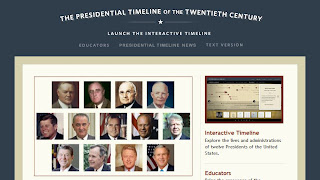From the Academy of American Poets, this site has a large selection of poems, as well as biographical information about poets, and other information.
- Poem-a-Day: You can skim the poems they've posted recently. And you can sign up to get a daily email with a poem to enjoy and think about.
 |
| Some of the themes listed on Poets.org |
- Search for poems or look for poems sorted by theme here.
- Listen to audio (interviews and readings) and watch video here.
- Poems for Teens has a good selection—35 poems, by my count.
- The "For Educators" tab lists
- Tips for Teaching Poetry
- Poetry Resources for Teens
- Curriculum & Lesson Plans
- Great Poems to Teach
- Essays on Teaching
- Teaching Resource Center
- Poetry Read-a-Thon
Users can set up accounts and create "notebooks" of poems. These lists might be good for kids:
The Poetry Foundation has a large selection of poems, listed by subject (Love, Nature, Social Commentaries, etc.), occasions (Birthdays, Weddings, etc.), or holiday. You can also look at poems arranged by the "school" (Augustan, Beat, Harlem Renaissance, New York School, etc.), the poet's birthplace, or the poet's century.
You can also find examples of different verse forms (e.g., haiku, limerick), stanza forms, meters, and techniques (e.g., alliteration, metaphor). (This would have been handy with a high-school student I tutored last year who was studying some of these concepts.)
Whatever search you do, you can filter to include only poems that are good for children. Without any other search terms, there are
175 poems tagged as good for children.
There's a page for
audio (readings, lectures, interviews) and a page for
video.
There's a
page for Children's Poetry. A series of videos for kids is
The Children's Poet Laureat Presents. There are three very short (half a minute)
videos from Classical Baby (I'm All Grown Up Now).
Here is a series of short videos of poets and actors reading poetry, produced by a public TV station (WGBH, in Boston) in association with the Poetry Foundation. Most of the videos are recent, but there's one black-and-white video of Robert Frost reading "Stopping by Woods on a Snowy Evening."
Poetry Everyhwere also includes a collection of
34 short animations created by students at the University of Wisconsin Milwaukee. Students might enjoy these. Who doesn't like clever animation? Plus they could help with reading skills, because you hear the poems read while seeing animated characters and, usually, animated words. Very cool.
 |
| Animated poetry menu |
(These might require Flash. They don't work on my iPad, anyway.)
If you like videos, check out the
Favorite Poem Project, which shows people reading and discussing their favorite poems. A lot of the people in the videos are students or ordinary folks (a construction worker, a doctor, etc.), but some are famous. (Bill Clinton and Hillary Clinton each read a poem.)
Poetry Webcasts and Podcasts include readings and interviews with poets.
Poetry Resources has lots of helpful links.
Poetry 180 (collected by Billy Collins)
is designed to make it easy for students to hear or read a poem on each of the 180 days of the school year. I have selected the poems you will find here with high school students in mind. They are intended to be listened to, and I suggest that all members of the school community be included as readers.
A poem a day, picked out for students!
This site doesn't indicate who produces it. It has a comparatively small selection of famous poems. It's page listing poetry genres and terms links to Wikipedia entries.
Why list poetry resources?
- Most important: students might like it and find it meaningful.
- Students who are already interested in poetry can learn more and develop their own craft.
- Students might have homework that these resources could help with.
- Some of those students who can't be talked into reading a book might be persuaded to try just a poem or two.
- Hearing authors and actors read poetry could help reading fluency. Students who are assigned to do interpretive reading in class can hear how it's done.
































